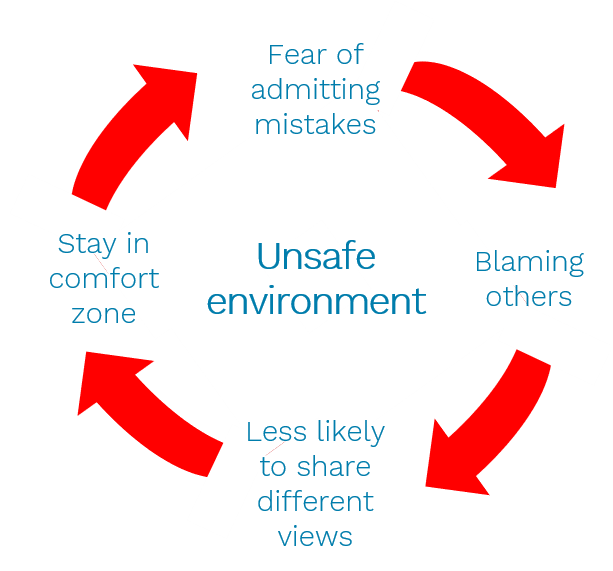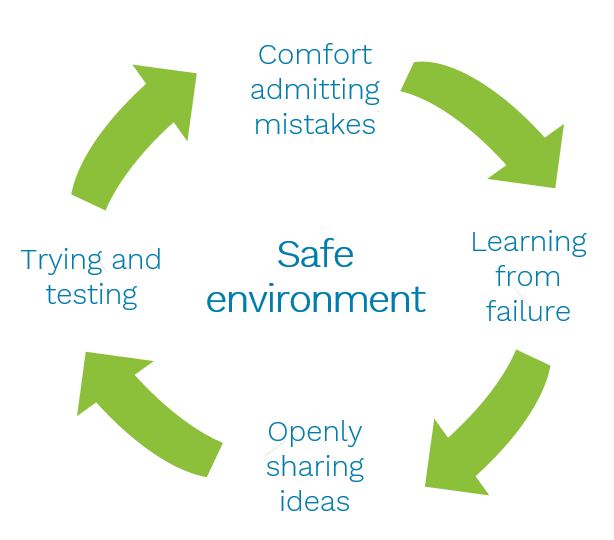Creating the Environment
Safety
"Psychological safety isn't about being nice. It's about giving candid feedback, openly admitting mistakes, and learning from each other"
- Dr. Amy Edmondson -
When Sam Walton, the founder of Walmart, was asked by a reporter, "how did you become so successful" Walton answered, “I've made a lot of good decisions". He was then asked, "how he learned to make good decisions," Walton replied, "by making a lot of bad decisions."
Every leader makes mistakes, but how you handle the aftermath of a mistake is critical. Great leaders ensure that poor choices do not compound their mistakes. They also make sure they learn from their mistakes and develop actions to handle the situation differently in the future.
It is not that you do not make mistakes, but how you react when yourself or others have missteps, that will determine how those who work with you feel about how safe it is do the same.
“Listen with curiosity. Speak with honesty. Act with integrity.”
Roy T. Bennett
A fearless workplace is a collective belief or team norm that you will not be punished or humiliated when you make a mistake, ask a question, produce an idea, or voice a concern.
According to Google, if you can create an environment of safety, where “team members feel safe to take risks and be vulnerable in front of each other,” it will underpin everything else needed for extraordinary performance, such as dependability, structure, and clarity.
Amy Edmondson, who coined the term psychological safety, argues that if uncertainty and interdependence exist in a work environment, teams require psychological safety to function effectively.
Does this sound familiar? Which do you choose?
Dealing with failure
Getting to fearless requires us to do the one thing many of us have been taught to avoid at all cost: being comfortable with being wrong. Because admitting you are wrong can have a disastrous effect on the way others perceive you, many of us tend to hold back in the name of self-protection. Even more dangerous is challenging a co-worker or superior on their ideas and pointing out when they may be wrong. As Edmondson says: “We are so busy managing impressions that we don’t contribute to innovating.”
It is important for leaders and team members to be able to hold one another accountable for results and behaviours. However, this can easily become confused with blame, particularly in the wake of failure. When there is a sense that everyone is on trial, people are less likely to bring their full selves to work.
Outlying views
When team members observe that outlying views are regularly dismissed, they are less likely to share ideas or knowledge that stray from what the rest of the group knows. The people who voice the most common information tend to have the most influence on the discussion, largely because group members prefer to hear information that confirms their own view. Similarly, those who raise fewer common points tend to have less credibility within the group and therefore less incentive to continue voicing their opinions.
Getting Fearless
The key to getting fearless lies in your response to the above. You can turn these around by celebrating mistakes as opportunities to learn, to show gratitude for the work and effort invested, regardless of a negative outcome and by actively listening for outlying or contrarian views and rewarding them.
Content contributed by Helen Morley, 2021
VAN ZIJ NAAR IK NAAR WIJ
All rights reserved | TeamUnleash


